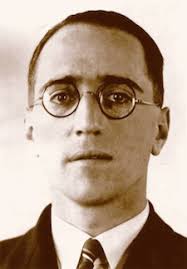Unsung engineers that gave us things we take for granted
Alan Blumlein 1903-1942
Now here’s a clever chap that not many people would have heard about. Amongst other things, his work was instrumental in bringing us stereo sound at the movies, stereo record recording, 405 line TV and Airborne Radar in WW2.
Cinema stereo sound
In his early career, Alan worked on the characteristics of the human ear and how sensitive it was to different frequencies and sound levels. This helped him design special circuits to improve speech over early telephone cables. One day at the cinema, he noted how annoying it was that the voices from the actors on film, did not follow their position on screen. Normally only one speaker was set behind the projector screens in the ‘30s. He developed a system called Binaural sound (later to be known as stereo). We worked out that recording two channels of sound using two microphones set on an axis of 45 degrees gave a realistic “spatial” sound reproduction. He helped design a system where this signal was recorded on the edge of the film and hey presto, the actor’s voices would follow the images from left to right!
Stereo record recording
Whilst working at the Columbia Gramophone Company (later to become EMI), he started work on an alternative method of cutting sound on a master record. Up until the early ‘30s, if you wanted to cut a record, you had to pay big royalties to the U.S. company Western Electric. They had a patented design for the bit that converted sound to the cutting device used on a record. Blumlein designed a clever variation on this, using a moving coil system. No more royalties were needed and the sound quality was much better. He then modified this cutting head (using 2 coils working at right angles) which allowed him to cut a record grove containing stereo sound. The beauty of this design was that the record could also be played on a mono system with no loss of detail. Stereo records were born.
Television
There was a race to create a high quality “standard” for TV transmission and reception. Blumlein’s boss at EMI, Shoenberg, set him to work full time on this. Alan designed and patented many circuits to help and improve picture quality. Things like flyback scanning, black level clamps etc… all became common place in TV sets. Some of these principles are still used today. Blumlein and his team were instrumental in the 405 line standard that was adopted in the UK and many other countries prior to the war. It was the Full HD equivalent of today’s telly. The 405 line standard ran for 50 years, being switched off in 1985. I remember the day well. I sat and watched the signal vanish on a 1959 Ferguson 506T. TV. Sad day!
There were numerous other patents filed by Alan and his team. Lack of space prevents me to rambling on. One patent related to the “Ultra linear amplifier” deign. He worked out that a simple connection at the output transformer of a valve amplifier, feeding an inverted sample of the sound back into the valve stage, created an amplified sound with extended frequency range and stability. This technique has been adopted ever since.
HS2 radar
During the early war years, Blumlein worked on the Top Secret HS2 airborne radar system. This was to increase accuracy in target bombing. Working with the TRE (telecommunication Research Establishment, Secret Squirrel stuff), he and several other senior engineers from EMI installed the sophisticated radar gear in a Halifax bomber and set off on trials from RAF Defford, 7th June 1942. After an hour or so, the Halifax developed an engine fire and crashed in Herefordshire, killing all on board. His work was continued by colleagues and was a recognised factor in shortening WW2. PM Churchill ordered a cover up of the death of the crew, even to family. Rumours of German sabotage were always maintained by Blumlein’s wife.
So, there we have it. A short but brilliant life, gave a massive contribution. Thank you Mr. Alan Blumlein.
Seth Pittham Zeta Services. Remember 10% off labour rates if you bring this with you!




